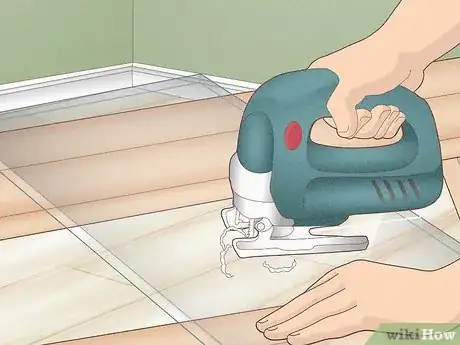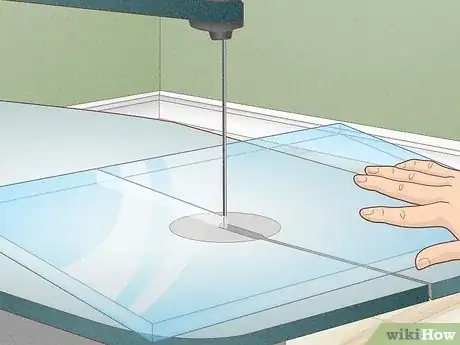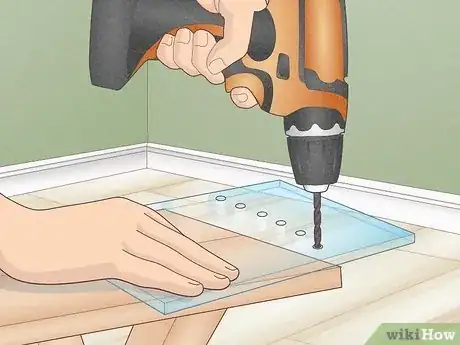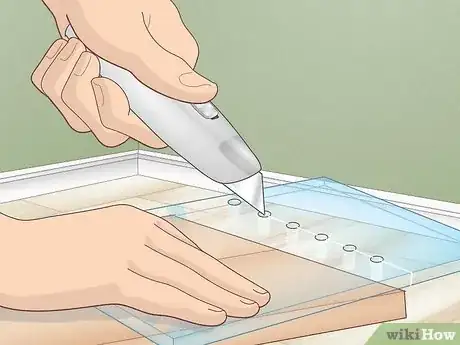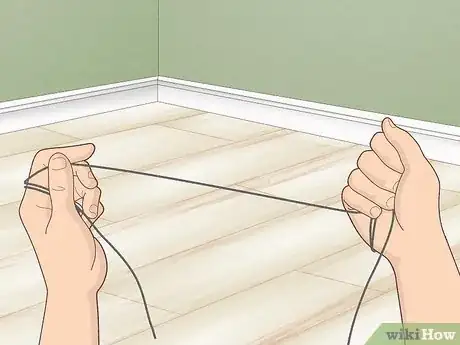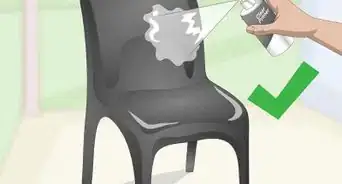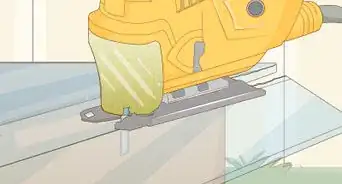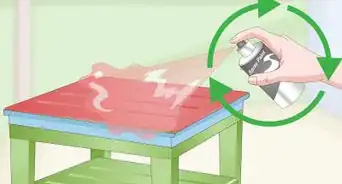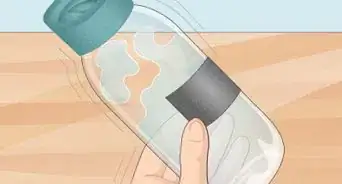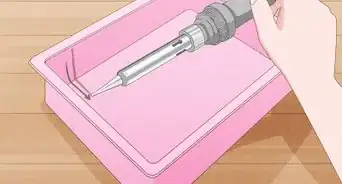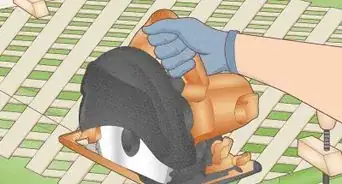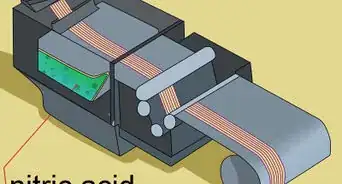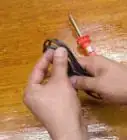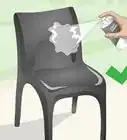This article was co-authored by Jacob Pischer. Jacob Pischer is a Home Improvement Specialist and the Owner of Helpful Badger, a home repair service in Portland, OR. With over four years of experience, Jacob specializes in a variety of handyman services including pressure washing, cleaning gutters, repairing drywall, fixing leaky plumbing fixtures, and repairing broken doors. Jacob studied at Madison Area Technical College and has a background in real estate investment.
There are 8 references cited in this article, which can be found at the bottom of the page.
This article has been viewed 214,982 times.
Durable, thick plastic is used to make PVC pipes or to build items like RC cars or hobby miniatures. Depending on the type of plastic you need to cut through, use a fine-toothed saw, a hacksaw, or a non-melting table saw blade. You can also drill small holes to make the plastic easier to cut through, or slice through thick plastic with a piece of string.
Steps
Sawing Thick Plastic
-
1Cut through plastic with a fine-toothed saw.[1] When using a fine-toothed saw, clamp the plastic you’re cutting to a table or work bench with a C-clamp. Saw using the full length of the blade, and move the saw in smooth, quick back-and-forth motions through the material you’re cutting. Using a saw with fine, small teeth will allow you to cut through thick plastic precisely and without destroying the plastic itself.
- While all saws will be able to cut through plastic, saws with large teeth will leave the plastic torn or shredded.[2] Some of these fine-toothed saws look like a knife or straight-razor and can easily be used with one hand.[3]
- A selection of fine-toothed saws may be available for purchase at hobby stores, since they’re commonly used to cut plastic models and die-cast figurines.
-
2Cut through plastic with a jigsaw. When cutting with a jigsaw, hold the object you’re sawing firmly, or use a C-clamp to hold it on a table. Squeeze the trigger, so the blade is moving before you touch it to the plastic. Hold the saw’s handle steady, and use firm pressure to press the blade through your plastic.
- A jigsaw will work best if you’re cutting heavy-duty plastic, including PVC pipe.[4] The blade of a jigsaw is about 8 inches (20 cm) long, so won’t lend itself to detailed cutting (for example, if you want to cut out a small circle of plastic).
- You can purchase jigsaws and other fine-toothed saws at your local hardware store.
- A SAWZALL is another great tool for cutting plastic.[5]
Advertisement -
3Saw through thick plastic with a non-melt blade. Start the table saw running, and set the plastic you want to cut on the flat surface of the saw table. Hold the plastic by its sides, and slowly push it forward until it engages the blade. Continue to push the plastic forward in a slow, steady motion, until the blade has cut through the entire plastic object.
- If you’re cutting through thick plastic with a table saw, the heated saw blade may melt the plastic. Avoid this by cutting through heavy-duty plastic with a non-melt blade, which will not heat up enough to melt the plastic material. These blades will have evenly-spaced teeth which are set close together.[6]
- Non-melt table saw blades should be available for purchase at a nearby hardware store.[7]
Drilling Holes to Facilitate Cutting Plastic
-
1Select a small drill bit. It’s often tough to cut directly through thick plastic, even with a saw or a sharp knife. If you drill out a series of small holes in the plastic you’re planning to remove, you’ll have an easier time cutting the plastic. To do this, you’ll need a power drill and a small drill bit.[8] Choose a drill bit that’s no larger than 1⁄8 inch (0.32 cm) in diameter.
- If you don’t have an electric power drill and drill bits of varying sizes, you can purchase them at a local hardware store.
-
2Drill at least 6 holes in the plastic you want to remove or cut through. Use the small drill bit to drill 6–10 holes in the section of plastic you’re trying to cut through or remove. Make these holes as close to one another as possible. This will weaken the structure of the plastic.[9]
- This method will be most effective if you’re doing detailed cutting—for example, on a hobby miniature.
- If you’d like to cut through very large sections of plastic, you can do so by drilling small holes throughout its surface. This method could even work when cutting heavy PVC pipe. The process will be painstaking and time consuming, but it will allow you to cut precisely.
-
3Cut from one hole to the next. Use a hobby knife and cut through the plastic that remains between the holes that you’ve drilled. It may still be tough to cut through the thick plastic. Since you’ll have removed a lot of the connecting material, though, the plastic you’re cutting will be weak and already partially removed.[10]
- Utility knives are also often called hobby knives. They can be purchased at any craft or hobby-supply store.
Slicing Through Plastic with String
-
1Test your string’s durability. You’ll need a section of string about 2 feet (61 cm) long to cut through plastic. Jerk your hands outward with medium force while holding the string. It if flexes slightly and doesn’t snap, it’ll cut through plastic.[11]
- You can purchase cotton or polyester string at any quilting or hobby store.
-
2Clamp the plastic firmly between your knees. The plastic that you’re cutting through needs to be held steady while you use the string to slice through it. Hold it tightly between your knees, since you’ll need both hands free.
- Depending on the size and shape of the plastic, you could also use a C-clamp to hold it to a worktable. This is risky though, since if you exert too much pressure with the clamp, the plastic could break.
-
3Work the thread back and forth to start a small incision. It’s best if you can set the thread in a corner or along an edge of the plastic, then begin to slide it back and forth. After a few moments, the thread will have cut a tiny groove in the plastic. Set the thread in this little groove and continue to work it back and forth. The groove will lengthen and eventually cut through the plastic.[12]
- This is a slow, painstaking process. Cutting through thick plastic with thread —for example, when customizing an RC car or working with hobby models and miniatures—is effective, but can take hours.
-
4Replace the string if it gets hot or frayed. Continue working the thread back and forth until you’ve cut through the plastic. If you notice that part of the thread has become hot (due to its friction with the plastic), you may need to use a new section of thread. Hot thread is likely to snap. Roll a few more inches off of the spool, and continue cutting.[13]
- The plastic that you’ve sliced through should have a very smooth, clean break without any rough or jagged spots.
Community Q&A
-
QuestionMy plastic is 0.3 mm thick. I don't have a table saw, jigsaw or a non-melt saw blade. What can I do?
 T. ChinsenTop AnswererAny toothed blade will cut through plastic. As described in the article, a fine-tooth saw or even a utility knife can cut the plastic. Another possible tool is to use is an unwanted steak knife. Make sure to follow the warnings section to avoid injury.
T. ChinsenTop AnswererAny toothed blade will cut through plastic. As described in the article, a fine-tooth saw or even a utility knife can cut the plastic. Another possible tool is to use is an unwanted steak knife. Make sure to follow the warnings section to avoid injury.
Warnings
- Take safety precautions whenever you use a saw or knife. Never cut towards yourself.⧼thumbs_response⧽
- When using a table saw, keep your hands and fingers clear of the blade, or you could be seriously injured. Avoid wearing loose clothing when cutting with a table saw, and wear protective glasses or goggles.⧼thumbs_response⧽
- When using power tools, find out if you are comfortable with thick gloves. This can be easy or difficult during emergency as you'll have less reaction time if your gloves get caught in the moving parts.⧼thumbs_response⧽
References
- ↑ Jacob Pischer. Home Improvement Specialist. Expert Interview. 4 September 2020.
- ↑ Jacob Pischer. Home Improvement Specialist. Expert Interview. 4 September 2020.
- ↑ https://diy.stackexchange.com/questions/18346/what-is-a-good-way-to-cut-hard-plastic-so-it-will-have-a-smooth-finish
- ↑ https://www.bobvila.com/articles/how-to-cut-plastic/
- ↑ Jacob Pischer. Home Improvement Specialist. Expert Interview. 4 September 2020.
- ↑ https://www.bobvila.com/articles/how-to-cut-plastic/
- ↑ https://www.toolstoday.com/saw-blades/non-melt-plastic-cutting-saw-blades.html
- ↑ http://fantasygames.com.pl/how-to-cut-thick-plastic-easily/
- ↑ http://fantasygames.com.pl/how-to-cut-thick-plastic-easily/
About This Article
To cut thick plastic, you'll need a fine-toothed saw, jigsaw, or table saw, since plastic can be tough to cut through. Start by clamping it to a workbench or holding it firmly so it doesn’t move. Then, use a fine-toothed saw to make the cut. Use the full length of the blade and move the saw in quick, smooth motions. If you have trouble, try drilling small holes along the line you want to cut to weaken the plastic first. Alternatively, use a jigsaw to cut through the plastic. You can also use a table saw, but make sure you use a non-melt blade so the heat of the saw doesn’t melt your plastic For more tips, including how to slice through plastic with a piece of string, read on!


